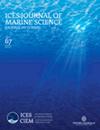A review and synthesis of the benefits, drawbacks, and considerations of using traps to survey fish and decapods
IF 3.4
2区 农林科学
Q1 FISHERIES
引用次数: 0
Abstract
Traps (or pots) are one of the oldest and most widespread scientific survey gears for fish and decapod crustaceans around the world. Here, I review and synthesize the extensive scientific literature describing the various benefits and drawbacks of using traps as a survey gear in scientific studies. The widespread use of traps in fish and decapod surveys is due to several characteristics like their low cost, flexible design, ease of use, ability to fish unattended, and being amenable to pairing with other gears. However, there are a number of significant drawbacks of using traps, including highly variable catches due to environmental fluctuations or behavioral interactions or lost traps that continue catching and killing animals, that must be considered and accounted for when initiating trap surveys. This study highlights the types of habitats and species most and least suited for monitoring by traps, and emphasizes the importance of matching the goals and objectives of a trap survey with the correct trap design, mouth entrance, bait type, soak time, and pairing of gears. Pilot studies are also recommended before surveys are initiated to quantify the selectivity patterns of traps and identify the various factors that may influence trap catch.对使用诱捕器调查鱼类和十足目动物的益处、缺点和注意事项的回顾与综述
诱捕器(或捕笼)是世界上最古老、最普遍的鱼类和十足目甲壳类科学调查工具之一。在此,我回顾并综合了大量科学文献,这些文献描述了在科学研究中使用诱捕器作为调查工具的各种好处和缺点。诱捕器在鱼类和十足目调查中的广泛使用是由于其成本低廉、设计灵活、易于使用、可在无人看管的情况下捕鱼以及可与其他渔具搭配使用等特点。然而,使用诱捕器也有许多明显的缺点,包括因环境波动或行为相互作用而导致捕获量变化很大,或丢失的诱捕器会继续捕杀动物,这些都是在启动诱捕器调查时必须考虑和解决的问题。本研究强调了最适合和最不适合用诱捕器监测的生境和物种类型,并强调了将诱捕器调查的目的和目标与正确的诱捕器设计、入口、诱饵类型、浸泡时间和渔具搭配相匹配的重要性。还建议在调查开始前进行试点研究,以量化诱捕器的选择性模式,并确定可能影响诱捕器捕获量的各种因素。
本文章由计算机程序翻译,如有差异,请以英文原文为准。
求助全文
约1分钟内获得全文
求助全文
来源期刊

ICES Journal of Marine Science
农林科学-海洋学
CiteScore
6.60
自引率
12.10%
发文量
207
审稿时长
6-16 weeks
期刊介绍:
The ICES Journal of Marine Science publishes original articles, opinion essays (“Food for Thought”), visions for the future (“Quo Vadimus”), and critical reviews that contribute to our scientific understanding of marine systems and the impact of human activities on them. The Journal also serves as a foundation for scientific advice across the broad spectrum of management and conservation issues related to the marine environment. Oceanography (e.g. productivity-determining processes), marine habitats, living resources, and related topics constitute the key elements of papers considered for publication. This includes economic, social, and public administration studies to the extent that they are directly related to management of the seas and are of general interest to marine scientists. Integrated studies that bridge gaps between traditional disciplines are particularly welcome.
 求助内容:
求助内容: 应助结果提醒方式:
应助结果提醒方式:


